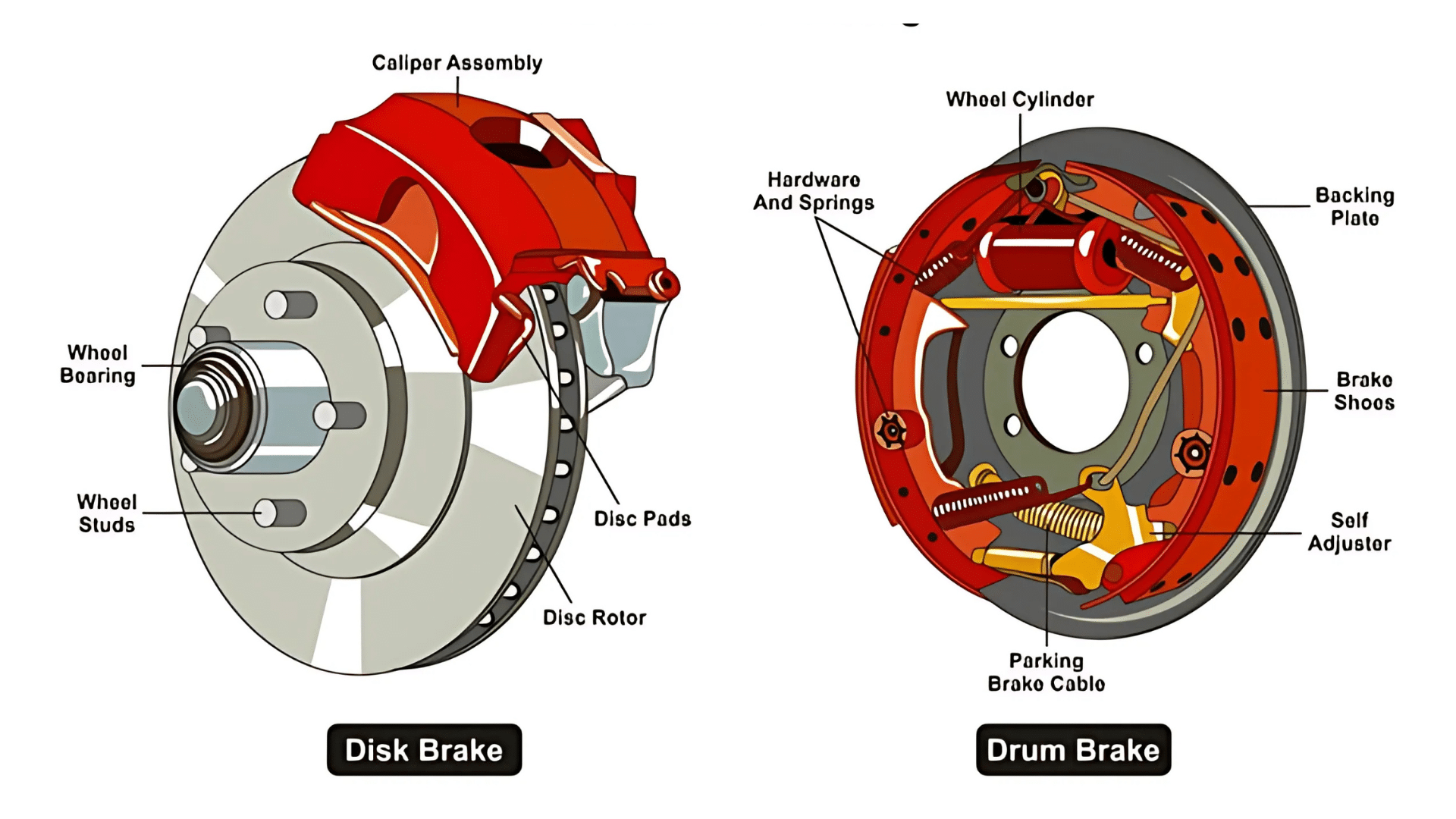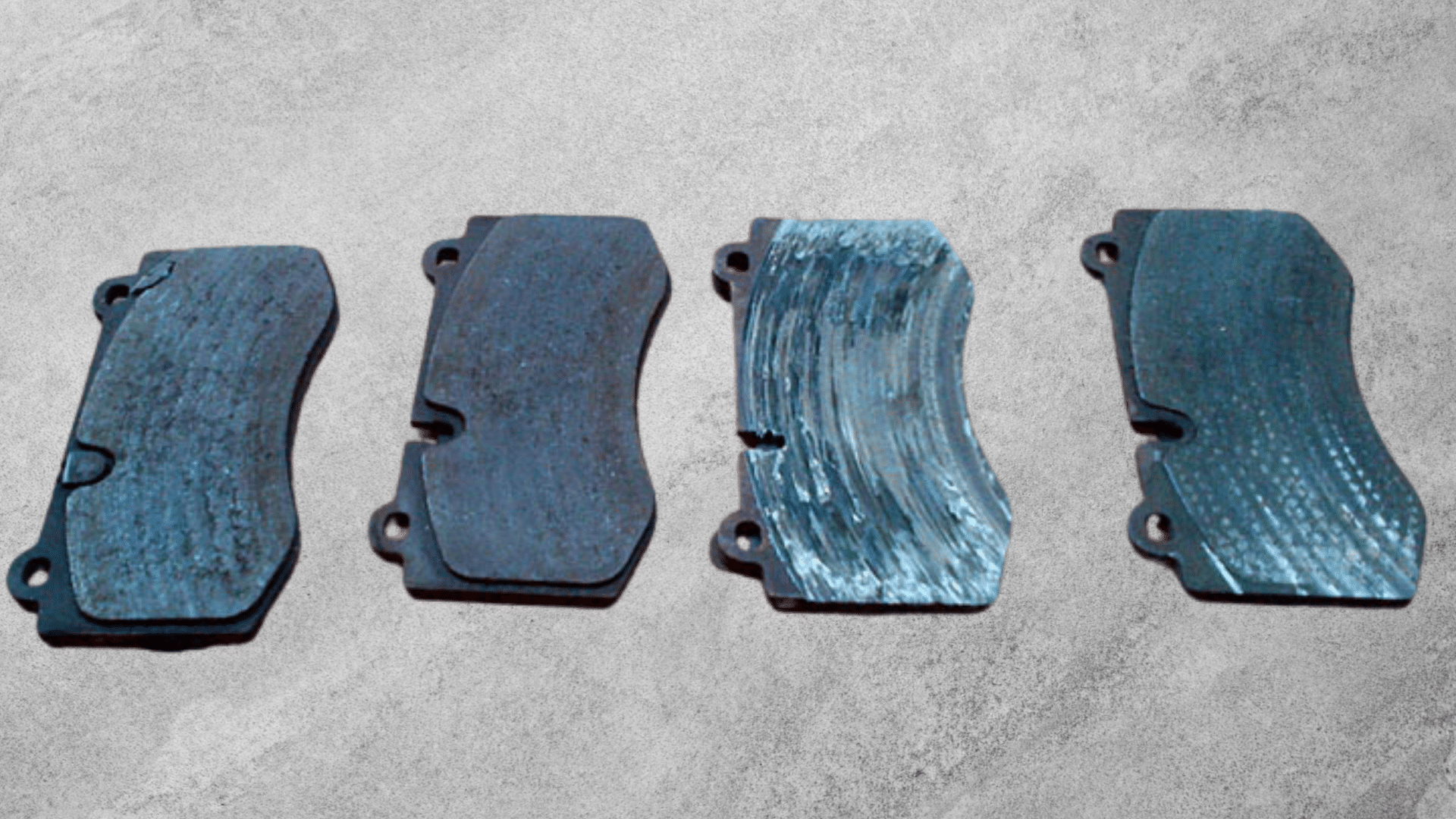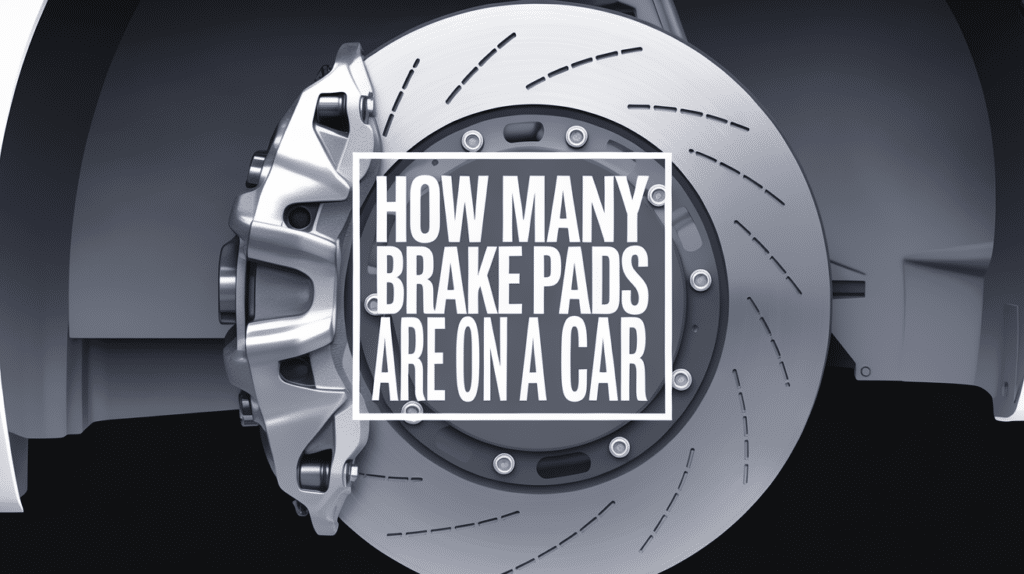Brake pads are an important part of your car’s braking system. They help slow down or stop your car when you press the brake pedal.
But have you ever wondered how many brake pads your car has? It’s not just a simple answer, as it depends on the type of car and its braking system. Most cars have four brake pads, but there are some exceptions.
In this guide, I’ll explain how many brake pads your car uses, why they are needed, and how to take care of them. Knowing about brake pads can help you maintain your car better and stay safe on the road.
Let’s look closer at how many brake pads your car has and what you should do if they need replacing.
Understanding Brake Pads

Before we dive into the number of brake pads in a car, it’s important to understand what they are and how they work.
Brake pads are flat pieces of material that are part of the disc brake system. These pads press against the brake rotor (the round metal disc attached to your wheel) to create friction. This friction slows down the wheel and eventually stops the car.
There are two main types of brake systems in cars: disc brakes and drum brakes. Most modern cars use disc brakes, which are more efficient and reliable.
Drum brakes are more commonly found in older cars and in the rear brakes of some newer vehicles.
How Many Brake Pads Are in a Car?

Most cars have four brake pads—two on the front wheels and two on the rear wheels. However, there are exceptions, and the number can vary based on the vehicle’s design.
For a Front-Wheel Drive (FWD) Car
In most front-wheel-drive cars, there are two brake pads on the front wheels and two on the rear wheels.
This is because the front wheels are responsible for most of the braking. The rear brake pads usually wear out more slowly than the front ones, so they don’t need as much attention.
For a Rear-Wheel Drive (RWD) Car
In rear-wheel-drive cars, the setup is similar, with two brake pads on each wheel. The difference is that the rear wheels handle more of the braking in some situations.
If you have a performance car or a vehicle designed for heavier loads, the rear brake pads might wear out faster.
For All-Wheel Drive (AWD) or Four-Wheel Drive (4WD) Cars
For all-wheel-drive (AWD) or four-wheel-drive (4WD) cars, the car will typically have four brake pads, just like other vehicles.
The brake pads on these vehicles tend to wear evenly since all wheels are engaged in braking.
Electric and Hybrid Vehicles
Electric and hybrid vehicles may also have four brake pads, but they often have a special braking system. These vehicles tend to use regenerative braking, which uses the car’s motor to help slow the car down.
This reduces the wear on the brake pads, meaning they may last longer compared to traditional braking systems.
| Vehicle Type | Number of Brake Pads |
|---|---|
| Front-wheel drive (FWD) | 4 (2 front, 2 rear) |
| Rear-wheel drive (RWD) | 4 (2 front, 2 rear) |
| All-wheel drive (AWD) | 4 (2 front, 2 rear) |
| Four-wheel drive (4WD) | 4 (2 front, 2 rear) |
| Electric/Hybrid | 4 (2 front, 2 rear) |
| Performance or Heavy-Duty Vehicles | 4 or more (depending on the system) |
Why Do Cars Have Four Brake Pads?
The reason most cars have four brake pads is that each wheel needs to be able to stop independently of the others.
Having two brake pads per wheel helps provide enough friction to slow the car down safely. The balance between the front and rear brake pads is essential for maintaining stability while stopping.
Cars have two pads on each wheel because the brake pads push against either side of the brake rotor. This allows the car to stop quickly and smoothly without damaging the braking system.
Are There Cars That Use More Than Four Brake Pads?
In general, most cars only use four brake pads. However, there are some exceptions. Some high-performance cars, trucks, or vehicles used for heavy towing may use more than four brake pads.
These vehicles might have a multi-piston brake system, which could require more pads to handle the increased braking force. For example, some luxury cars or sports cars may have ceramic brake pads, which provide extra stopping power.
If you’re driving a car with a multi-piston brake system or something like a race car, you may have more brake pads. This setup is less common for regular, everyday vehicles but is used in cars that need to handle heavy braking demands.
What Happens If You Don’t Replace Brake Pads?
Brake pads are a crucial part of the braking system. They wear down over time due to constant friction. If you don’t replace them when they become too thin, several problems can occur:
Reduced Braking Power
As the brake pads wear down, they lose their ability to create friction, making it harder to stop your car. This can increase your stopping distance and make it more difficult to stop in emergencies.
1. Damage to Other Parts: If the brake pads are not replaced, the metal part of the pad can begin to rub against the brake rotor. This can cause grooves and damage to the rotor, which will need to be replaced at a much higher cost.
2. Noise and Vibration: Old, worn brake pads often cause squeaking or grinding noises. If you hear these sounds when you brake, it’s a sign that the pads are worn and need to be replaced. Sometimes, vibration in the brake pedal or steering wheel can also happen.
3. Increased Repair Costs: Ignoring worn brake pads can cause more extensive damage to the braking system, leading to higher repair costs. Replacing just the brake pads is a relatively inexpensive fix compared to replacing the rotors or the entire brake system.
How to Tell When Brake Pads Need to Be Replaced

There are several signs that your brake pads may need replacing. The most common ones to look out for:
- Squeaking or Squealing Noises: If your car makes a high-pitched squeak when you press the brake pedal, the brake pads may be worn down. Many brake pads have a built-in indicator that makes noise when they need to be replaced.
- Grinding Noise: A more serious sign is a grinding sound, which occurs when the brake pads are so worn that the metal part of the pad is rubbing directly against the rotor. If you hear this sound, get your car checked immediately.
- Vibration in the Brake Pedal: If the brake pedal feels shaky or vibrates when you press it, this could mean the brake pads are worn unevenly or something is wrong with the brake rotors.
- Longer Stopping Distance: If your car takes longer to stop or the brakes feel less responsive, it might be time to replace the brake pads. This is especially important for safety, so don’t ignore it.
- Visual Inspection: You can visually inspect the brake pads through the wheel. If the pads look thin (less than 1/4 inch), they need to be replaced. It’s a good idea to have a mechanic inspect them regularly.
How to Take Care of Brake Pads
Proper maintenance can help extend the life of your brake pads. Some tips to keep your brake pads in good condition:
- Drive Smoothly: Avoid hard braking or speeding up quickly. Aggressive driving can cause your brake pads to wear out faster. Try to brake smoothly and avoid sudden stops.
- Avoid Overloading the Car: Carrying heavy loads puts extra pressure on the braking system. If you regularly carry heavy loads, it can cause the brake pads to wear out quicker.
- Check the Brake Fluid: Low brake fluid can reduce braking performance. Make sure the brake fluid is topped up regularly.
- Rotate Tires Regularly: Rotating your tires regularly helps maintain even wear on your brake pads, especially if your car’s weight distribution causes more stress on one side of the vehicle.
Conclusion
Most cars have four brake pads—two on the front and two on the rear. These pads work together to slow down your vehicle and ensure that you can stop safely.
Brake pads are essential to your car’s braking system, and they wear out over time due to constant friction.
If you notice any signs of worn-out brake pads, such as strange noises, vibrations, or a longer stopping distance, it’s important to replace them immediately.
Taking care of your brake pads with proper driving habits and regular maintenance can help ensure your car stays safe and runs smoothly.
By paying attention to the condition of your brake pads and addressing issues early, you can avoid costly repairs and keep your car in top condition.
Frequently Asked Questions
How long do brake pads last?
Brake pads typically last between 25,000 to 70,000 miles, depending on driving habits, vehicle type, and road conditions. Regular maintenance and smooth driving can help extend their life.
How much does it cost to replace brake pads?
Replacing brake pads usually costs between $100 to $300 per axle, including parts and labor. The cost can vary depending on your car’s make and model and whether you need additional parts like rotors.
Do all cars use the same type of brake pads?
No, different cars use different types of brake pads based on factors like size, weight, and performance. Some vehicles use ceramic, metallic, or semi-metallic brake pads, each with its benefits.


